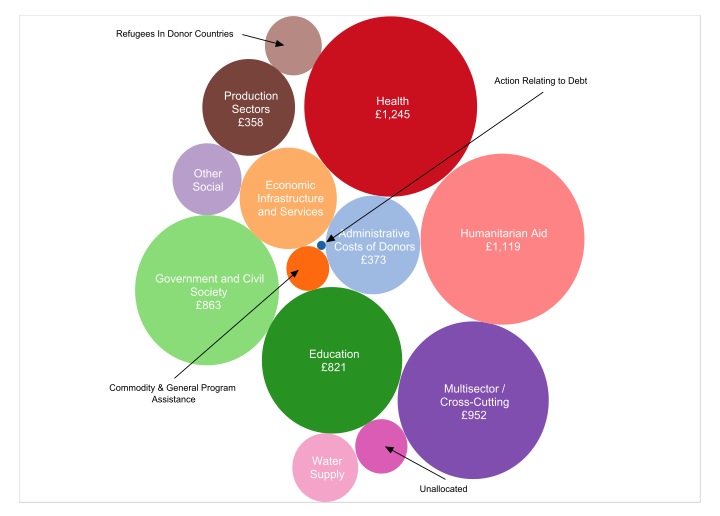On 14 July 2016, the Prime Minister Theresa May announced her new Cabinet, following a significant reshuffle and re-structure of Government. In this context, researchers from all over Newcastle University express their thoughts on the challenges and opportunities for the Government in the Ideas for May’s Ministers blog series, considering how individuals, communities and societies can thrive in times of rapid, transformational change. Professor Mark Reed is the N8 Professor of Socio-Technical Innovation at Newcastle University, funded through the Agri-Food Resilience Programme, and a Professor in the Institute for Agri-Food Research & Innovation and Centre for Rural Economy at Newcastle University. Download his policy brief on this subject.
To: Andrea Leadsom, Secretary of State for Environment, Food and Rural Affairs
From: Professor Mark Reed, Newcastle School of Agriculture, Food and Rural Development
Depending on the policy decisions made in the next weeks and months, we may be about to embark of one of the biggest ‘experiments’ our country has ever known.
It will affect the UK’s rural communities, environment, water supplies, wildlife, recreation and cultural heritage and the consequences of getting it wrong are unthinkable.
And the question? In light of Brexit and the inevitable changes to funding, do we continue to actively manage the peatlands of upland Britain?
There are so many unknowns, how we take this forward is still up for debate. What is certain is that we can’t do nothing.
Without support, historically degraded peatlands in our uplands will continue to deteriorate, losing biodiversity as well as vast quantities of carbon to the atmosphere, degrading water quality and imposing higher water treatment costs on water companies, and subsequently on consumers.
The UK Government has argued consistently for the EU’s bloated Common Agricultural Policy (CAP) to be slimmed down but as yet there have been no indications whether farmers will receive less after the current guarantee on payments runs out in 2020.
Almost 40% of the EU’s budget is devoted to the CAP, which is designed to provide stable, sustainable and safe food supplies, whilst maintaining farm incomes.
If there is a reduction in funding, then there is a good chance that farmers in the lowlands will adapt, as long as there are favorable trade deals.
However, a small change in payments could have a significant impact on the viability of land management operations across many UK uplands, given the precarious nature of many upland enterprises that currently depend on EU subsidies.
Leaving aside the wider political arguments, the withdrawal of the UK from the EU’s Common Agricultural Policy after Brexit represents an opportunity to develop new agricultural policies that are better value for taxpayers, protect nature and support rural communities. We have a once-in-a-lifetime opportunity to change the basis on which we pay farmers and others who manage our land, to reward them for the environmental benefits that we all depend on, but often take for granted.
Peatlands represent an important opportunity for this new approach, given the considerable benefits provided by these habitats to the UK.
Research into post-Brexit policy options on peatlands, a large portion of our uplands, leads me to two key conclusions:
- There is strong evidence that paying for restoration and active management for conservation could provide benefits for wildlife, water quality, reduced flooding and climate. Meanwhile, we know little about the effects of large-scale withdrawal of management from peatlands.
- There is uncertain and often-contested evidence over the potential effects of policies that lead to a large-scale, significant reduction in active management. Taking, a Precautionary Approach would retain farm incomes but provide a renewed focus on the delivery of wider public benefits.
My idea for Andrea Leadsom MP (Environment Secretary) is that refocusing increased funding on restoration and environmental management could provide multiple benefits:
- Damaged peatlands would be restored, providing benefits for climate, water quality and wildlife that depend on healthy peat bogs;
- Recovery of native woodlands through targeted expansion on non-peat soils (e.g. in valley bottoms between deep peat areas), to provide biodiversity and wider benefits including shelter for livestock, reduce soil erosion and flood management benefits; and
- Many of the jobs, rural communities and cultural heritage associated with peatland management would be retained.
In this way, we can support rural communities whilst restoring and improving our largest semi-natural environment, delivering more benefits for everyone in society than we currently get from the money we spend on peatlands through the Common Agricultural Policy.
Download Professor Mark Reed’s policy brief on this subject.
To engage in the conversation, please tweet us @Social_Renewal #IdeasforMaysMinisters




